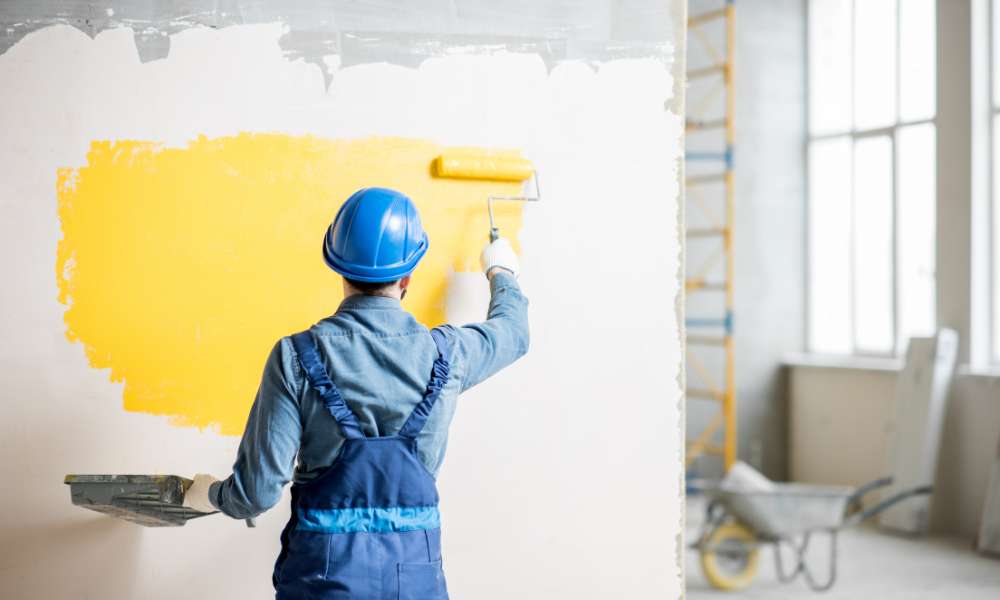Have you ever stood in front of the paint section at a home improvement store, feeling overwhelmed by the myriad shades and finishes available? Choosing the perfect color for your interior walls is just the beginning of your painting journey. The number of coats you apply can make all the difference between a lackluster finish and a professional-looking result. In this article, we delve into the age-old question: how many coats of paint are needed for interior walls? Join us as we uncover tips, tricks, and expert advice to help you achieve flawless walls that will leave guests marveling at your impeccable taste and attention to detail.
Understanding the Dynamics of Coats
Determining the ideal number of paint coats involves key factors. The paint type is crucial: high-quality, opaque paints may cover well in fewer coats, while lower-quality ones might need more layers for uniformity. Color change matters too; going from dark to light may need extra coats. Wall condition and primer use also affect coat count. A well-prepped wall with primer can reduce the need, ensuring a lasting finish.
The Merging of Tones
To smoothly transition between colors or bring out a color’s full potential on a wall, understanding how tones blend is crucial. This painting phase involves not just applying, but also recognizing how colors react in different lighting. Light sources, coats of paint are needed for interior walls natural or artificial, can greatly impact color perception, influencing the needed coats. Considering your room’s lighting is vital; what looks vibrant in store lighting may differ under home lighting. The chosen finish – matte, gloss, or satin – also plays a role, affecting the coats needed due to how each interacts with light, potentially changing color appearance and texture on the wall.
Enhanced Color Richness
Adding more layers of paint not only boosts the wall’s durability but also enriches the color, enhancing its true vibrancy. Building up these layers is key to reaching the perfect shade, with each coat contributing to a more vivid and intense color expression. This is especially crucial for rich or dark hues, where color depth and consistency play a significant role in setting the room’s ambiance. Understanding how the number of coats impacts color intensity is a vital aspect of planning your interior design project. By thoughtfully planning and applying strategically, your walls can attain a luxurious, long-lasting finish that elevates your home’s overall aesthetic appeal.
Secrets in the Pattern
Achieving a flawless paint job is as much about the technique as it is about the quantity of paint applied. The way you apply each coat, the tools you use, and the patterns you follow can significantly impact the overall outcome. Understanding these techniques and the secrets behind them is crucial for anyone looking to accomplish a professional-looking finish. Whether you’re a DIY enthusiast or a seasoned pro, mastering the art of application will elevate your painting projects to the next level.
Testing on a Small Area
Before embarking on a painting project, many people often wonder how many coats of paint are needed to achieve a flawless finish. This preliminary step allows you to observe how the adheres to the wall, its drying time, and most importantly, how the color behaves under different lighting conditions throughout the day. It’s not uncommon for colors to appear drastically different than they do on a sample card or when wet. By allowing this test section to dry fully, you provide yourself an opportunity to evaluate the paint’s true color and finish, thereby making an informed decision on whether it meets your expectations or if adjustments are needed before proceeding with the entire room.
Paint Manufacturer’s Recommendations
Each paint manufacturer may recommend the number of coats for optimal results. These guidelines are crucial, especially for beginners. Manufacturers consider their paint’s formula, including pigment density, drying times, and finish, when advising. Following these suggestions can enhance job quality, ensuring it matches the product’s performance. Consult the manufacturer’s instructions for tailored advice on your chosen for the best outcome.
Seek Professional Insights
The perspective of a professional is invaluable. Experienced painters offer insights not only on types and methods but also on how colors can enhance spaces in unexpected ways. They guide you in achieving the desired finish, suggest the right tools, and provide tips to avoid common errors. Moreover, they give tailored advice based on your space’s conditions like humidity, wall texture, and natural light, influencing the final result. Consulting a professional beforehand saves time, money, and frustration, ensuring your project surpasses expectations.
Conclusion,
The number of coats of paint required for interior walls ultimately depends on the condition of the surface, the type and color t, and personal preference. While some projects may only need one coat for a fresh look, others may benefit from multiple coats for better coverage and durability. It is important to properly prepare the surface before painting and to follow the manufacturer’s recommendations for application. Taking the time to apply the right number of coats will ensure a professional finish that enhances the overall aesthetic of your space. Remember, investing in quality materials and proper technique will result in a long-lasting and beautiful job for your home.
